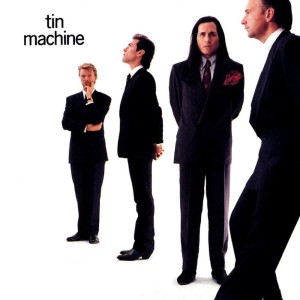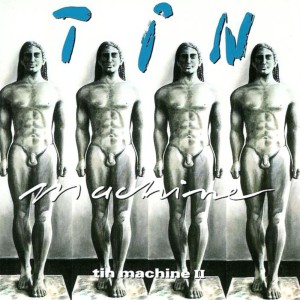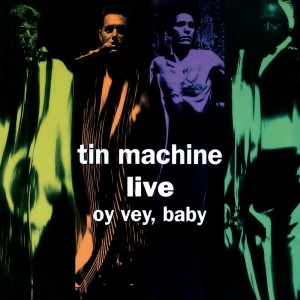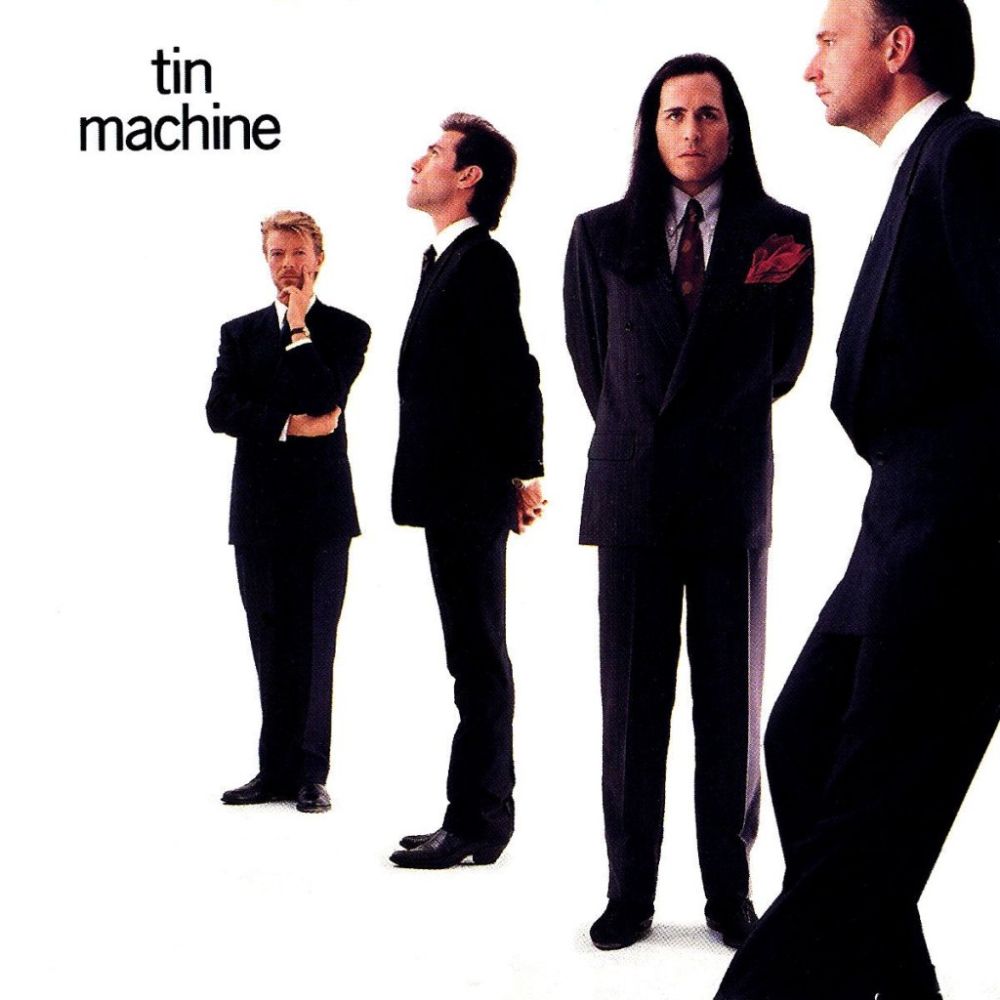 After the lackluster reception to 1987’s Never Let Me Down, David Bowie considered giving up music for a while. The album didn’t sell as well as expected, and the tour suffered from technical problems and lackluster sales, partly because he was simply “going through the motions” after the blockbuster success of Let’s Dance and to a lesser extent the follow-up Tonight (which was popular more on the momentum of Let’s Dance). As a reaction to the direction his career was going Bowie allowed himself to be prodded into forming a band with guitarist Reeves Gabrels – introduced by Gabrels wife who was a publicist on the Glass Spider tour (the tour behind Never Let Me Down).
After the lackluster reception to 1987’s Never Let Me Down, David Bowie considered giving up music for a while. The album didn’t sell as well as expected, and the tour suffered from technical problems and lackluster sales, partly because he was simply “going through the motions” after the blockbuster success of Let’s Dance and to a lesser extent the follow-up Tonight (which was popular more on the momentum of Let’s Dance). As a reaction to the direction his career was going Bowie allowed himself to be prodded into forming a band with guitarist Reeves Gabrels – introduced by Gabrels wife who was a publicist on the Glass Spider tour (the tour behind Never Let Me Down).
Gabrels and Bowie were joined by Hunt and Tony Sales and the four of them became the band Tin Machine. David Bowie was working in a group, not with a set of backing musicians, and this was an important point. While the sound certainly had a lot of familiarity for David Bowie fans (at least those who were familiar with him before Let’s Dance) it had a much harder edge to it. Today the 1989 self titled album sounds “normal” but in 1989 radio and MTV (because that’s where music was actually played then) it was out of place – and looking back it was ahead of its time.
After the first album was well received (critically at least) it seemed as if this new band would be the direction David Bowie would be taking. There never was an interview (that I saw) with Bowie alone. There was always at least one other band member. Most of the songs were co-written with band members. Tin Machine played a rather short tour of smaller venues and a “stripped down” or “back to basics” types of show.
“Baby Can Dance”
While the band on on hiatus between the first tour and recording of the second album, David Bowie released the collection Sound + Vision and embarked on a solo tour to say farewell to many of his previous songs. This tour was, in contrast, a large sale affair and a massive success playing stadiums and arenas around the world.
 1991’s Tin Machine II featured more songs co-written by Bowie and Gabrels, with fewer co-written by the band as a whole. It did not get as much critical praise as its predecessor. Unfortunately this second album did not receive as much promotion and as a result, did not sell as well. Part of the problem could be traced directly to the album’s cover art which several retailers refused to carry and subsequently had to be altered – but by then it was too little too late. Interestingly this second album is more cohesive than its predecessor.
1991’s Tin Machine II featured more songs co-written by Bowie and Gabrels, with fewer co-written by the band as a whole. It did not get as much critical praise as its predecessor. Unfortunately this second album did not receive as much promotion and as a result, did not sell as well. Part of the problem could be traced directly to the album’s cover art which several retailers refused to carry and subsequently had to be altered – but by then it was too little too late. Interestingly this second album is more cohesive than its predecessor.
Again the band toured, this time much more extensively, but keeping to the smaller venues and pared down stage act.
“Stateside”
 A live album was released, but it was more of a sampler than anything else. At only 8 songs it didn’t capture Tin Machine effectively as a live band. The contrast between the Sound + Vision tour and the tour undertaken by Tin Machine, audiences had pretty much abandoned the band. As a result David Bowie resumed his solo career.
A live album was released, but it was more of a sampler than anything else. At only 8 songs it didn’t capture Tin Machine effectively as a live band. The contrast between the Sound + Vision tour and the tour undertaken by Tin Machine, audiences had pretty much abandoned the band. As a result David Bowie resumed his solo career.
It’s a shame Tin Machine didn’t last long enough to have any sort of legacy. What I especially do not like is how the first album is generally available as a David Bowie album (retconned into his solo output between Never Let Me Down and Black Tie White Noise) and the second and live albums are completely overlooked if not completely dismissed – and unavailable.
“You Belong In Rock & Roll” (Live)
It’s a shame, as I rather liked Tin Machine.

